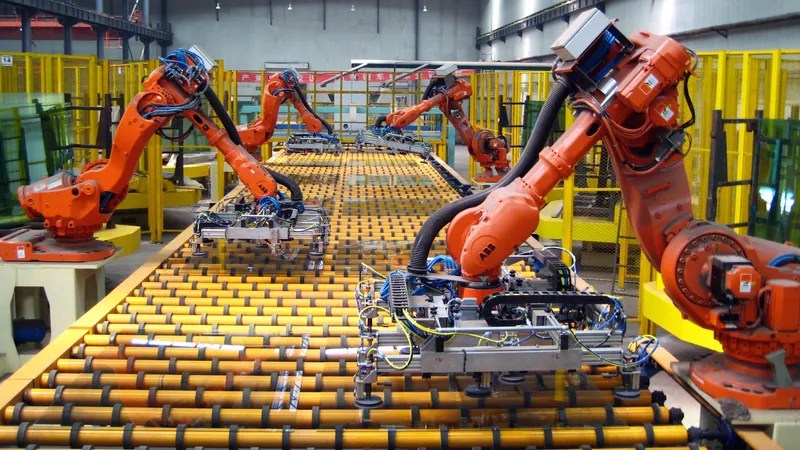Outline
I. Introduction to Robotics
- A. Definition of Robotics
- B. Brief history of Robotics
- C. Importance of Robotics in Industry and Everyday Life
II. Robotics in Industry
- A. Automation in Manufacturing
- B. Improving Efficiency and Precision
- C. Safety Benefits
- D. Cost Reductions
III. Robotics in Everyday Life
- A. Household Robots
- B. Healthcare Applications
- C. Transportation and Delivery
- D. Education and Entertainment
IV. Challenges and Future Prospects
- A. Ethical Considerations
- B. Technological Advancements
- C. Integration with AI
V. Conclusion
- A. Recap of Robotics’ Impact
- B. Looking ahead to the Future
Introduction to Robotics
In today’s rapidly evolving world, robotics plays a pivotal role in shaping various sectors, both in industry and everyday life. Robotics, fundamentally, involves the design, construction, operation, and use of robots to perform tasks autonomously or semi-autonomously. Its significance is underscored by its pervasive presence, from the manufacturing floor to our homes.
Robotics in Industry
Automation in Manufacturing
One of the most prominent applications of robotics is in industrial automation. Robots are extensively used in manufacturing processes to carry out repetitive tasks with precision and speed. They excel in tasks such as assembly, welding, painting, and packaging, thereby streamlining production lines and enhancing overall efficiency.
Improving Efficiency and Precision
Robotic systems are equipped with advanced sensors and algorithms that enable them to execute tasks with unparalleled accuracy and consistency. This precision is crucial in industries like automotive, aerospace, and electronics, where even minor deviations can lead to significant ramifications.
Safety Benefits
Robots are deployed in hazardous environments, such as chemical plants or nuclear facilities, to mitigate risks to human workers. By handling dangerous tasks, such as handling toxic substances or working in extreme temperatures, robots help ensure the safety and well-being of personnel.
Cost Reductions
While the initial investment in robotics can be substantial, the long-term benefits often outweigh the costs. Robots can operate around the clock without breaks, leading to increased productivity and reduced labor expenses. Moreover, by minimizing errors and waste, they contribute to higher-quality outputs and lower operational costs.
Robotics in Everyday Life
Household Robots
The integration of robotics into household appliances has revolutionized daily chores. From robotic vacuum cleaners and lawn mowers to smart home assistants, such as Amazon Alexa and Google Home, these devices simplify tasks and enhance convenience for homeowners.
Healthcare Applications
In the healthcare sector, robots are employed for various purposes, including surgical procedures, rehabilitation therapy, and eldercare assistance. Surgical robots, for instance, enable surgeons to perform minimally invasive procedures with enhanced precision, resulting in shorter recovery times and improved patient outcomes.
Transportation and Delivery
The emergence of autonomous vehicles and drones is reshaping the transportation and logistics industry. Self-driving cars promise to enhance road safety and reduce traffic congestion, while delivery drones offer swift and efficient parcel delivery services, particularly in remote or inaccessible areas.
Education and Entertainment
Robots are increasingly being utilized in educational settings to engage students and facilitate hands-on learning experiences. Additionally, entertainment robots, such as Sony’s Aibo or Boston Dynamics’ Spot, captivate audiences with their lifelike movements and interactive capabilities, blurring the lines between technology and entertainment.
Challenges and Future Prospects
Ethical Considerations
As robotics technology advances, ethical concerns surrounding its use become more pronounced. Issues related to job displacement, privacy infringement, and autonomous decision-making raise ethical dilemmas that necessitate careful consideration and regulation.
Technological Advancements
Continual advancements in robotics, particularly in areas like artificial intelligence (AI) and machine learning, hold immense promise for the future. These advancements pave the way for more sophisticated robots capable of adapting to dynamic environments and performing complex tasks autonomously.
Integration with AI
The synergy between robotics and AI is driving innovation across various domains. AI-powered robots can learn from their interactions with the environment and make intelligent decisions accordingly, opening up new possibilities in fields such as healthcare, manufacturing, and service industries.
Conclusion
In conclusion, robotics represents a transformative force that permeates both industry and everyday life. From revolutionizing manufacturing processes to enhancing household chores and healthcare services, robots continue to redefine the way we live and work. As we navigate the complexities of an increasingly automated world, it is imperative to embrace the opportunities presented by robotics while addressing the associated challenges.
FAQs
- How are robots used in manufacturing?Robots are used in manufacturing for tasks such as assembly, welding, painting, and packaging, thereby improving efficiency and precision.
- What are the benefits of incorporating robotics in everyday life?The benefits include enhanced convenience, improved safety, and increased productivity across various sectors, including household chores, healthcare, transportation, and entertainment.
- What are some ethical considerations associated with robotics?Ethical considerations include concerns about job displacement, privacy infringement, and the ethical implications of autonomous decision-making by robots.
- How do robotics and AI intersect?Robotics and AI intersect through the integration of artificial intelligence technologies into robotic systems, enabling them to learn, adapt, and make intelligent decisions based on their interactions with the environment.
- What does the future hold for robotics?The future of robotics is characterized by continual technological advancements, greater integration with AI, and the emergence of more sophisticated robots capable of performing complex tasks autonomously.
